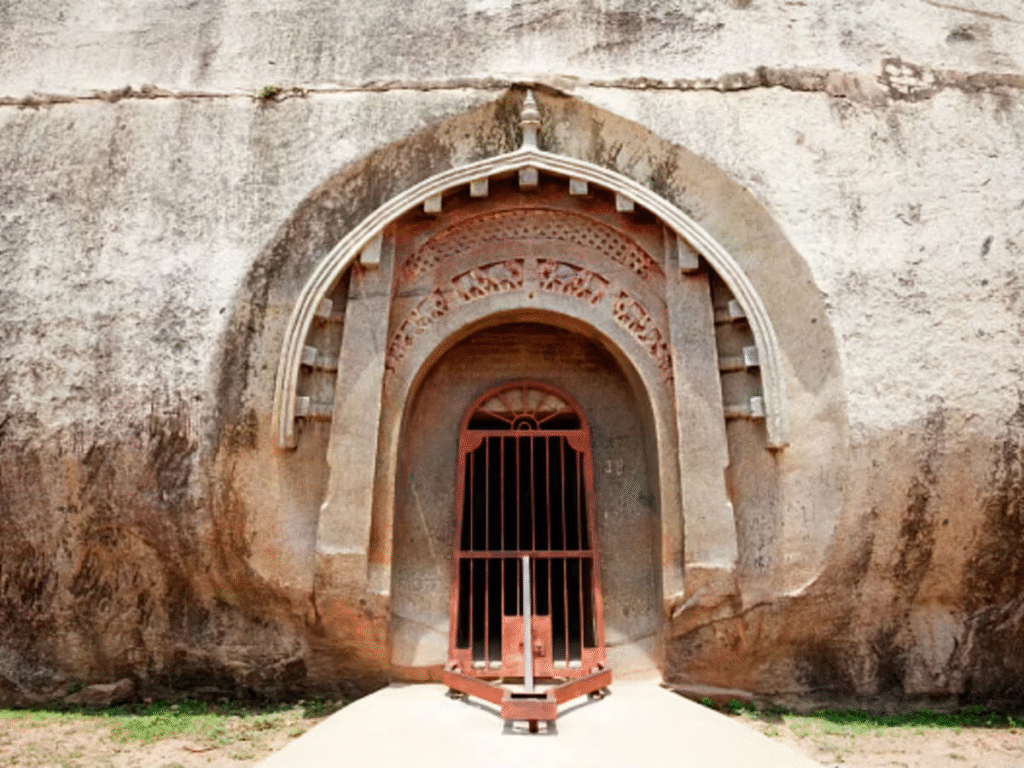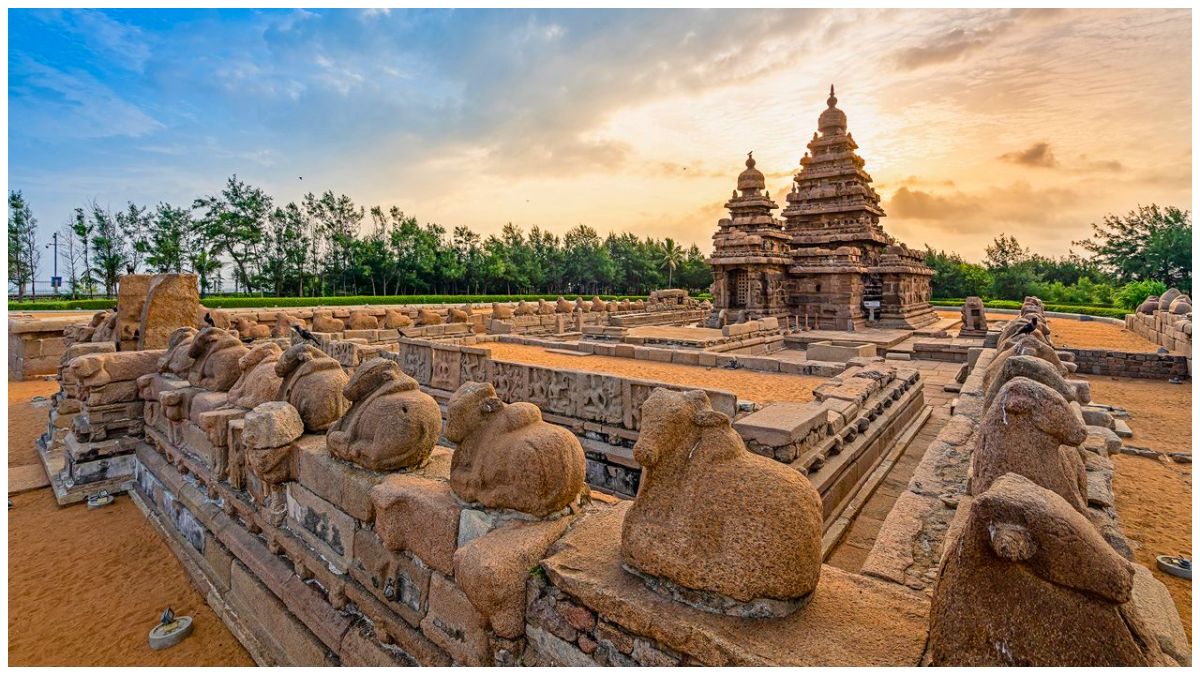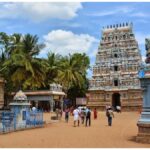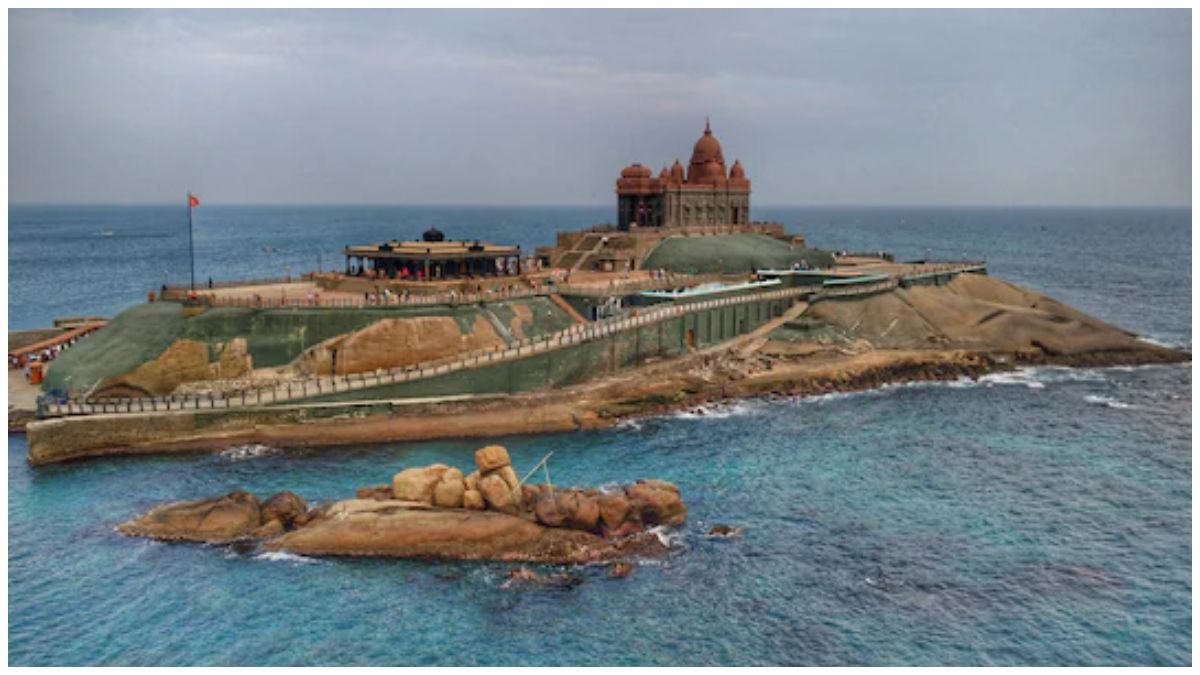13
Nov
9 Ancient Monuments in India That Are Over 1,000 Years Old
India’s landscape is a living museum every corner hides a story carved in stone. Some ancient monuments have stood for more than a thousand years, surviving empires, invasions, and time itself. These architectural marvels aren’t just relics; they’re living testaments to India’s spiritual depth, artistic genius, and engineering brilliance.
Let’s travel through nine such ancient wonders that have watched centuries unfold.
- The Great Stupa, Sanchi, Madhya Pradesh
Commissioned by Emperor Ashoka in the 3rd century BCE, the Great Stupa at Sanchi is one of the oldest Buddhist structures in the world. Its grand dome enshrines relics of the Buddha, while the beautifully carved gateways (toranas) narrate scenes from his life. - Shore Temple, Mahabalipuram, Tamil Nadu
Built in the 8th century by the Pallava ruler Narasimhavarman II, the Shore Temple stands proudly on the Bay of Bengal. It’s among South India’s earliest structural temples, marking a leap from rock-cut caves to intricately assembled stone architecture. Its symmetry and grace still leave visitors spellbound. - Kailasa Temple, Ellora, Maharashtra
Carved entirely from a single rock, the 8th-century Kailasa Temple is dedicated to Lord Shiva. Over 200,000 tons of stone were removed to create this masterpiece all without modern tools. The result is an awe-inspiring marvel that still puzzles engineers and historians today. - Khajuraho Group of Monuments, Madhya Pradesh
Built by the Chandela dynasty between 950 and 1050 CE, Khajuraho’s temples are famous for their intricate carvings and sculptures. Out of the original 85 temples, 25 remain each adorned with thousands of figures depicting deities, dancers, and celestial beings that celebrate life and spirituality in perfect harmony. - Barabar Caves, Bihar
Dating back to the 3rd century BCE, the Barabar Caves are India’s oldest surviving rock-cut structures. Carved from solid granite during Emperor Ashoka’s reign, they were used by the Ajivika sect. The mirror-smooth interiors reflect an astonishing level of craftsmanship for their time.

- Brihadeeswarar Temple, Thanjavur, Tamil Nadu
Built around 1010 CE by Chola king Rajaraja I, this granite giant is dedicated to Lord Shiva. Its 200-foot vimana and 80-ton stone cap leave visitors awestruck. A thousand years later, it still serves as a vibrant place of worship and a symbol of Chola architectural mastery. - Lingaraja Temple, Bhubaneswar, Odisha
Dating to the 11th century, the Lingaraja Temple is one of the oldest and most magnificent examples of Kalinga architecture. The 180-foot tower dominates the Bhubaneswar skyline, surrounded by dozens of smaller shrines within a vast courtyard. - Konark Sun Temple, Odisha
Built in 1250 CE by King Narasimhadeva I, the Konark Sun Temple resembles a colossal stone chariot dedicated to the Sun God. Its 24 carved wheels and seven stone horses represent the flow of time. A UNESCO World Heritage Site, it’s one of India’s most photographed monuments. - Virupaksha Temple, Hampi, Karnataka
Dating back to the 7th century, the Virupaksha Temple has been a center of worship for over 1,300 years. With its tall gopuram, intricate carvings, and sacred ambiance, it remains the heart of Hampi’s heritage a rare ancient temple still alive with rituals and devotion.






